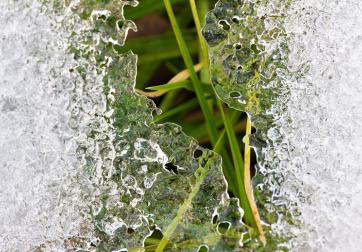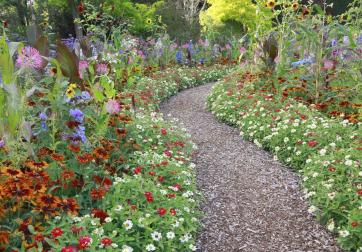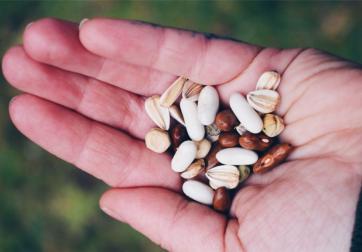Gardening
Spring is officially here and brings hope with a chance to start over. Since this winter was one of the worst in recorded history (in many ways), we really need something to look forward to this year. So, get your tools sharpened, dig out your gardening gloves/boots and make sure you have something on hand for sore muscles. As the weather permits, it is time to perform the following gardening chores:
- Cultivate annual flower and vegetable beds to destroy winter weeds. A sharp hoe is fast and efficient. Make sure it is sharp, and use a slicing motion to cut off weeds at soil level. Chopping does not always remove the roots. I like to use a scuffle/stirrup hoe because it works on both push and pull motions.
- Apply mulch to control weeds in beds. Only 3” to 4” keeps the soil temperature regulated, cuts down on weeds and watering, breaks down to feed the soil and plants, keeps soil from splashing on plants and spreading disease plus it makes the garden look much nicer.
- If you have annuals, you want to reseed, do not cultivate or apply mulch until they have sprouted and you can identify the seedlings you want to grow. Just transplant the extras or pull them up. If you have something like Cleome or Golden Crownsbeard that reseed so prolifically, the easiest thing I have found is to pull a rake through them and/or throw a shovelful of compost on top of them.
- Cut back herbaceous perennials. I leave perennial flowers all winter so the birds can enjoy the seeds. They certainly were consumed the last few weeks. Now is the time to cut perennial flowers back. You want to cut far enough to remove dead plant material but not too far into the crown of the plant that you damage new shoots or dormant buds waiting to break with the onset of warmer temperatures. I do a lot of “sheet composting” when I have many things to cut back at once. I cut the dead stems down to new growth, chop up the cut stems then stuff them up under larger plants to act as mulch and eventually turn into compost.
- Divide and replant or donate overcrowded summer and fall perennials now. Mow on highest setting of lawnmower or use a string-trimmer to cut back ornamental grasses before new growth starts. The easiest way to cut large ornamental grass clumps is with an electric hedge trimmer. However, try to do it on a day that is not windy or you will have clippings scattered everywhere.
- This is the time to control winter weeds in the dormant lawn with post-emergent broadleaf herbicides.
- It is time to use pre-emergent crabgrass control now. The preemergent puts down a barrier that keeps weeds from germinating and works on crabgrass as well as sandburs, foxtails and goosegrass. The best way to cut down on weeds (you will never get rid of all of them) is to have a thick healthy lawn, which crowds out most weeds.
- To scalp or not to scalp? Spring is in the air, so should you scalp your lawn to get it ready for the growing season? The simple answer is, “No, never scalp your lawn” in order to get faster green-up in the spring. The common rule for mowing turfgrass is to remove no more than 1/3 of the aboveground leaf in a single mowing. Scalping often removes 50% or more, and research has shown that removing more than 40% of turfgrass leaf tissue in one mowing can stop root growth for up to two weeks. Therefore, scalping your lawn in the spring would promote leaf tissue growth over root growth. Spring is a very important time for turfgrass root growth, and the more roots your lawn develops in the spring, the better it will withstand drought and other stress conditions throughout the summer. Scalping will also open up the turf to weed infestations.
- Water deep, not often. This is so important! Grass needs about 1” of water a week. You want the water to penetrate deeply into the soil so the roots can penetrate deeply into the soil. If you sprinkle the top of the ground every day, the grass roots will stay short and near the soil level. This goes for all your other plants, too. At the first sign of drought, high winds and hot temperatures, the roots will be cooked and die. If you have a sprinkler system, the worst thing you can do is to set it to water 15 minutes daily. It is much better to set it to water once or twice a week for long enough to supply 1” of water for the week. The old tuna can trick is a good way to measure exactly how much water your sprinkler is putting down in a certain amount of time. (Put a tuna can on the ground where you are watering. Measure the water in the tuna can – if one inch is reached, you are done.) Another important point to remember is to water early in the day, so the grass will be dry going into the evening hours. So, set your sprinkler for 5:00 or 6:00am (there is also less wind then) and never water after 10:00am to avoid mid-day heat. Overwatering, over fertilizing and overnight wetness provide the perfect breeding ground for insect and disease infestations that will kill the lawn you have worked so hard to maintain.

 Board Member Login
Board Member Login Our Store
Our Store Blog
Blog





